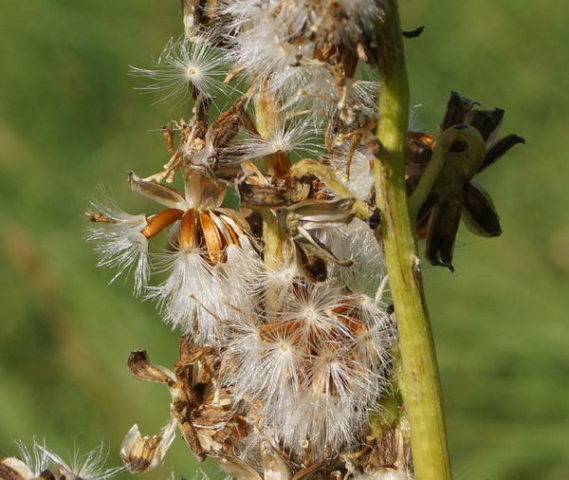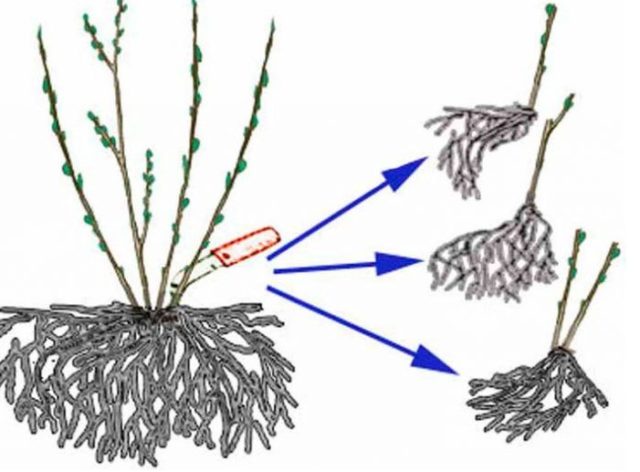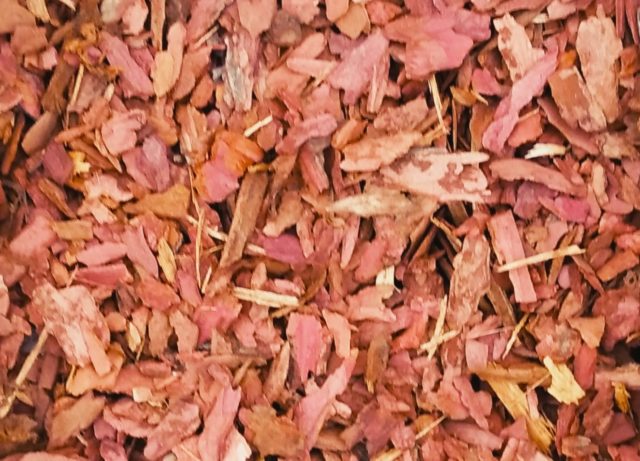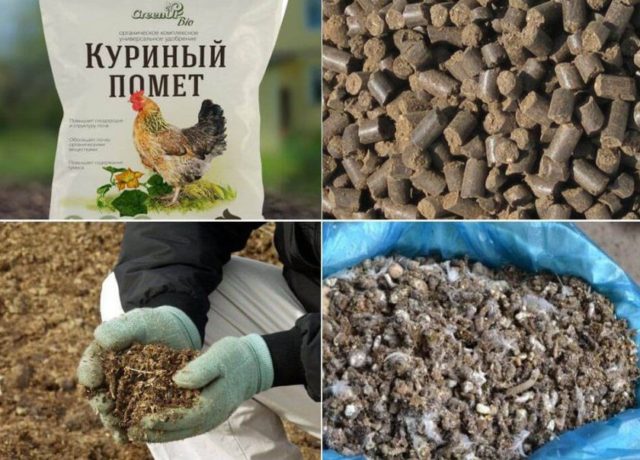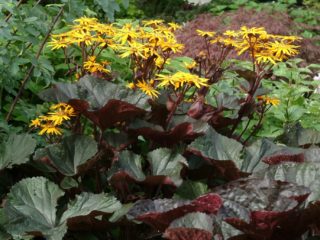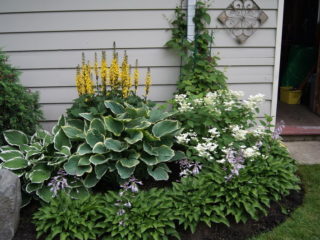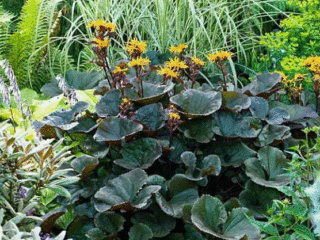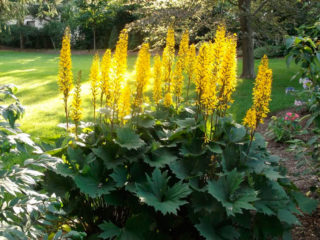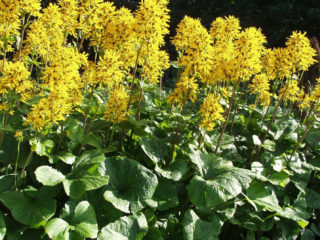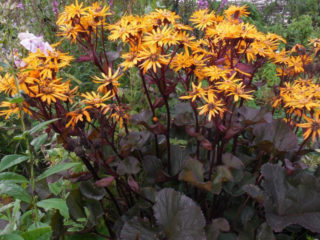Content
Buzulnik Desdemona is one of the best plants to decorate the garden. It is distinguished by long, lush flowering, which lasts more than 2 months. Buzulnik Desdemona can withstand winters, including extremely cold ones (down to -40 °C). The plant does not require special care, so both experienced and novice gardeners can cope with its cultivation.
Description of buzulnik Desdemona with photo
Desdemona is a perennial flowering plant from the Asteraceae family. It is a medium-sized shrub, reaching a height of 90 to 120 cm. With proper care, it lives for several decades. Moreover, it can grow in the same place for up to 15 years in a row, after which a transplant is required.
The main advantage of buzulnik is its long flowering, which lasts from June to mid-September. The culture produces numerous large flowers of rich yellow and orange shades, which reach 10-13 cm in diameter. They are united in paniculate inflorescences, shaped like daisies.
The Desdemona buzulnik bush is decorative thanks to its large, large leaves that reach 35-40 cm in width. Their outer side is painted in light green tones, and the lower side is brownish and dark lilac. Petioles are reddish-burgundy.
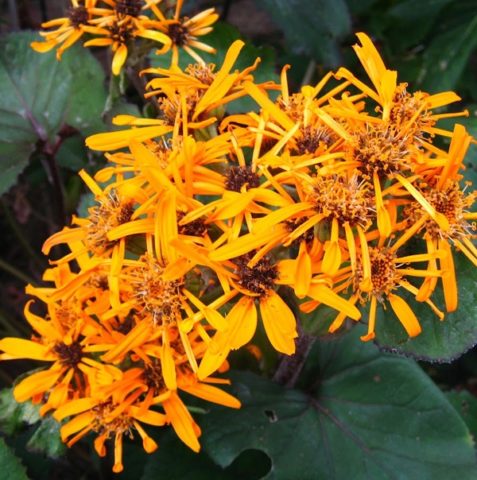
Buzulnik Desdemona decorates the garden not only with bright flowers, but also with attractive leaves
Application in landscape design
This variety is distinguished by the large size of the bush and flowers, so it is able to decorate nondescript, shaded areas of the garden. Looks great on ponds, near recreation areas, along fences and paths. It is also used in compositions with other ornamental plants. The plant is placed in the center of the flower bed or in the background. With its help, multi-tiered flower beds are created.
In the photo you can see several interesting ways to place the Desdemona buzulnik, used to decorate the garden.

A large crop with large leaves looks great even in single plantings
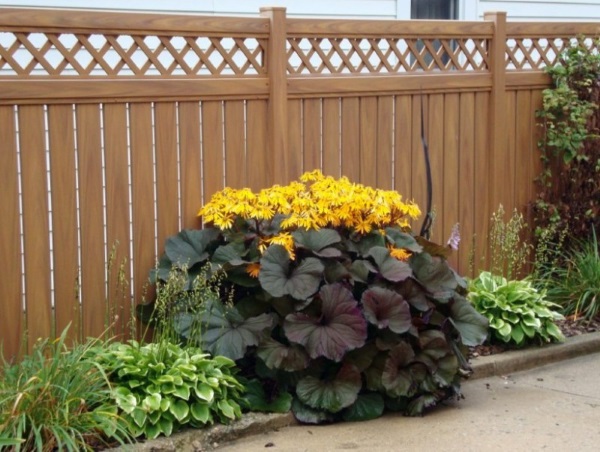
Buzulnik Desdemona is often placed in discounts
It can be grown next to a fence or near the wall of a building.

The plant can be used as a tapeworm in a small flower bed
Features of reproduction
There are two main ways to propagate Desdemona buzulnik:
- Growing from seeds.
- Vegetatively - by dividing the bush.
The first method is more labor-intensive. Seeds can be purchased at the store or collected independently from ripened inflorescences (in summer or September). They are thoroughly dried, then planted in open ground to a depth of 1.5-2 cm. There is no need to cover them with anything - in this state the seeds will undergo natural stratification in winter. The next season (April - May) the first shoots of Desdemona's buzulnik appear. They can be transplanted to a permanent location at the end of summer.
For vegetative propagation, divide an adult bush that is 5-7 years old. It is better to start the procedure in early spring, before the buds begin to swell and young shoots appear. The instructions are standard:
- The earth is cut with a sharp shovel.
- The bush is dug up and shaken off the ground.
- Divide the rhizome into several parts so that each division has several healthy shoots.
- The planting material is washed and the cut areas are sprinkled with charcoal or activated carbon powder.
- Plant the cuttings and water them abundantly.
Planting and caring for buzulnik Desdemona
Buzulnik Desdemona is characterized by high winter hardiness - it can withstand frosts down to -40 ° C. Therefore, this beautiful flower can be grown in almost any region of Russia. The plant does not require care. It can grow in different soils and decorate the garden throughout the season.
Recommended timing
Desdemona buzulnik can be planted both in spring (late April or first half of May) and in autumn (3-4 weeks before the first frost). However, many summer residents choose the first option, since in this case almost all seedlings take root successfully.
The specific timing depends on the region, the main criterion is that the threat of return frosts must pass:
- in the south it is the end of April;
- in the middle zone - the second ten days of May;
- in Siberia and the Urals - the second half of May.
It is recommended to plant the plant when stable warm weather sets in.
Site selection and soil preparation
When choosing a place to plant Desdemona buzulnik, you should pay attention to the recommendations of experienced gardeners:
- This is a shade-tolerant plant that grows well both in open areas and in partial shade. If the watering is good enough, it can be grown in the sun; if less frequent, it can be grown in the shade of a neighboring tree or tall bush.
- The soil should be sufficiently fertile and moist. But stagnation of moisture is undesirable, so you should not plant Desdemona buzulnik in the lowlands.
- As with other flowers, it is better to protect buzulnik from strong winds by planting the plant near buildings or a fence or green hedge.
Before planting, you need to dig up the soil (using a spade) and apply fertilizer. You can use organic (2 kg of humus per 1 m2) or complex mineral (50 g per m2).
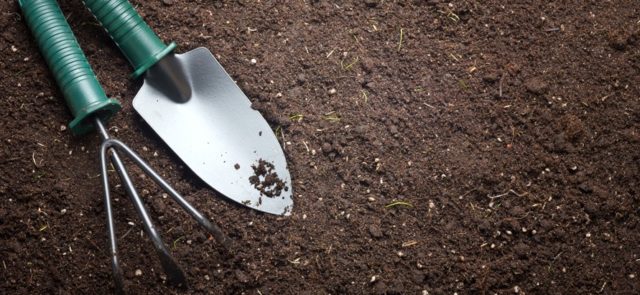
Buzulnik Desdemona loves loose soil, so all large clods need to be broken
Landing algorithm
The sequence of actions when planting Desdemona buzulnik is standard:
- In the prepared area, several shallow holes are formed (40 cm in depth and in diameter). The distance between adjacent holes is at least 1 m.
- A small layer (5-7 cm) of small stones, pebbles, and broken bricks is placed on the bottom for drainage.
- Buzulnik is planted so that the growth buds remain slightly above the ground level - 4-5 cm.
- If the soil is infertile or if it was not fertilized during preparation, add a mixture of garden soil and humus (1:1), 1 tbsp, to each hole. l. superphosphate and a few pinches of wood ash.
- Water generously (1-2 buckets of settled water).
- Mulch with peat, spruce branches, hay, wood chips or other materials.
Watering and fertilizing schedule
Buzulnik Desdemona is a moisture-loving plant, so the soil must be constantly kept moist. The standard watering regime is once a week (in the absence of rain). If there is a drought, you can water twice a week, giving a bucket of water. At the same time, it is advisable to spray the buzulnik bushes, doing this in the early morning or late evening.
The plant prefers fertile soils. If fertilizers were already placed in the hole when planting, there is no need to additionally feed. And starting from the next season, Desdemona buzulnik is fertilized 2 times:
- In spring (April - May), organic matter is added, for example, a solution of bird droppings or mullein.
- After flowering ends (at the end of August), humus is given.
Loosening and mulching
Since Desdemona buzulnik prefers light soils, it needs to be loosened quite often - ideally every week. It is especially important to do loosening the day before watering and fertilizing. Then moisture and nutrients will quickly enter the roots and then spread throughout the plant tissues.
Mulch should be done in the spring by placing peat, hay, straw, humus or other materials on the surface around the buzulnik. Thanks to mulch, the soil will retain moisture much longer. In addition, this layer prevents the growth of weeds (you need to periodically inspect the flower garden and remove weeds yourself).
Trimming
It is not necessary to specially prune the branches of Desdemona buzulnik. Only fading flower stalks need to be removed from the plant (however, if seeds are needed, they are left to ripen). In early spring, you can remove all damaged and broken shoots. There is also another pruning option - total removal of branches in the fall.This is especially important when preparing for winter in regions with an unfavorable climate.
Preparing for winter
In regions with a warm climate (south, Black Earth Region), buzulnik does not need special preparation for winter.

It is recommended to cut off the shoots completely, leaving the stems (4-5 cm) above the ground
Next, the bush is mulched, and in Siberia it is also covered with agrofibre or burlap. In early spring, the shelter is removed.

The plant is winter-hardy, but needs shelter, especially in regions with unfavorable climates.
Diseases and pests
Summer residents also love Desdemona buzulnik because it practically does not suffer from diseases and pests. Only in rare cases can a plant suffer from powdery mildew (the first signs are a whitish coating on the leaves). As a preventative measure in the spring, the buzulnik bush can be sprayed with a fungicide or homemade solution:
- 2% aqueous mixture of mustard powder and soap;
- Bordeaux mixture;
- "Tattu";
- "Fitosporin";
- "Skor";
- "Ordan";
- "Topaz".
Not a single species of insects is dangerous. However, there are other pests that like to parasitize the buzulnik - these are slugs. They can be removed manually, and for prevention, sprinkle the paths with crushed walnut shells, egg or stone chips. Superphosphate granules are suitable for these purposes.
Conclusion
Buzulnik Desdemona looks appropriate both in single plantings and in combination with other ornamental plants. This is an attractive bush with lush flowers and large leaves that enlivens the garden and creates an “orange” mood.
https://youtu.be/oAhWeX7s8tg
